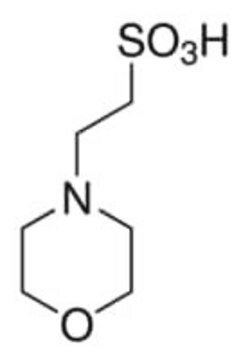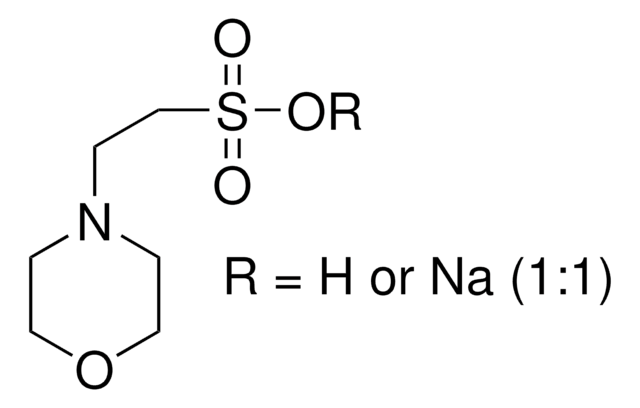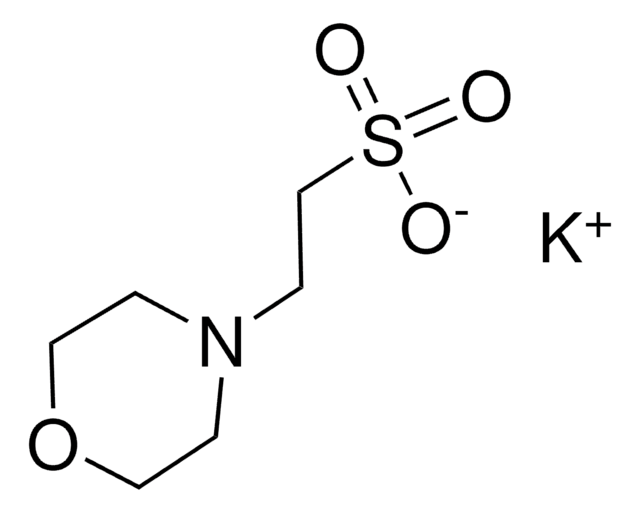M3058
MES sodium salt
BioPerformance Certified, suitable for cell culture
Synonym(s):
4-Morpholineethanesulfonic acid, sodium salt, Sodium 2-Morpholinoethanesulfonate, 2-(N-Morpholino)ethanesulfonic acid sodium salt, 4-Morpholineethanesulfonic acid sodium salt
About This Item
Recommended Products
Quality Level
grade
BioPerformance Certified
for molecular biology
form
crystalline powder
storage condition
dry at room temperature
technique(s)
cell culture | mammalian: suitable
impurities
endotoxin and total aerobic microbial count, tested
color
white
useful pH range
5.5-6.7
pKa
6.1
solubility
water: 335.3 g/L at 20 °C
suitability
suitable for component for culture media
suitable for molecular biology
application(s)
agriculture
diagnostic assay manufacturing
life science and biopharma
sample preparation
foreign activity
DNase, NICKase, RNase, protease, none detected
SMILES string
[Na+].[O-]S(=O)(=O)CCN1CCOCC1
InChI
1S/C6H13NO4S.Na/c8-12(9,10)6-3-7-1-4-11-5-2-7;/h1-6H2,(H,8,9,10);/q;+1/p-1
InChI key
IRHWMYKYLWNHTL-UHFFFAOYSA-M
Looking for similar products? Visit Product Comparison Guide
General description
Application
Features and Benefits
- Suitable for Molecular Biology and Cell Culture
- Tested for Endotoxins and Total Aerobic Microbial Count
- Free from DNase, NICKase, RNase, and Protease
- Effective Buffering from pH 5.5-6.7 (25 °C) with a pKa of 6.1 (25 °C)
Preparation Note
Other Notes
comparable product
Storage Class Code
11 - Combustible Solids
WGK
WGK 1
Flash Point(F)
Not applicable
Flash Point(C)
Not applicable
Personal Protective Equipment
Choose from one of the most recent versions:
Already Own This Product?
Find documentation for the products that you have recently purchased in the Document Library.
Customers Also Viewed
Our team of scientists has experience in all areas of research including Life Science, Material Science, Chemical Synthesis, Chromatography, Analytical and many others.
Contact Technical Service






